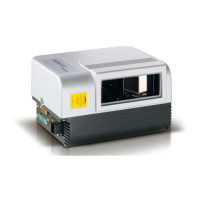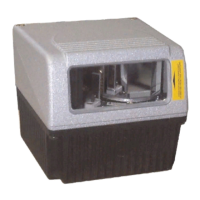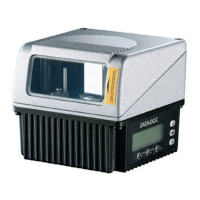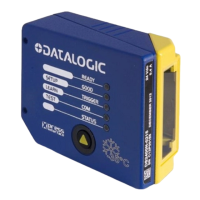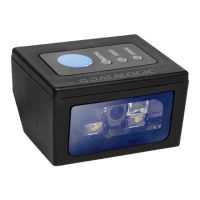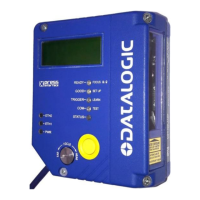Aux
(Input 3) Active
Level
Select Active Closed or Active Open from the drop-down list.
Active Closed: Input 3 is active when current flows through I3A/B pins.
Active Open: Input 3 is active when there is no current flowing through I3A/B
pins.
NOTE: This parameter setting is not valid, if the
input has already been defined in On Line or
PackTrack Operating Modes.
Select Digital
Output Number
to View/
Modify
Select the number of the output you will view or modify from the drop-down list.
Select Local, EthernetIP, or Profibus/Profinet from the drop-down list. This
parameter selects the source that drives the digital output. Local output is driven by
the device application program. EithernetIP is driven by the EtherNet/IP Host and
Profibus/Profinet is driven by the relative Fieldbus Host.
Digital
Output n
Line State
Select Normally Open or Normally Closed from the drop-down list.
Each output can be represented with an NPN transistor; this transistor acts like a
switch: so, when the transistor is OFF, it acts like an OPEN switch. On the contrary,
when the transistor is ON, it acts like a CLOSED switch.
Normally Open: The idle state of the output line is open, that is, the NPN
transistor is OFF (like an open switch).When the output is activated, the transistor
goes ON (like a closed switch).
Normally Closed: The idle state of the output line is closed, that is, the NPN
transistor is ON (like a closed switch).When the output is activated, the transistor
goes OFF (like an open switch).
Select a Primary Activation Event from the drop-down list (see below).
None: The output is always in line state.
Complete Read: The event occurs, if all selected codes are read.
Partial Read: The event occurs, if less than the selected codes are
read.
No Read: The event occurs, if no code is read.
Trigger On: The event occurs, when a start event takes place
starting the reading phase.
Trigger Off: The event occurs, when a stop event takes place
ending the reading phase.
Multiple Read: The event occurs, if a code is read more than once
consecutively.
Right/Match: The event occurs, if a code is successfully decoded
and matches the Match Code (Verifier Code).
Wrong/No Match: The event occurs, if a code is successfully
decoded but does not match the Match Code (Verifier Code).
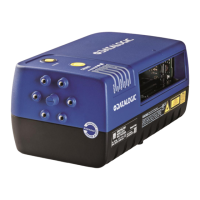
